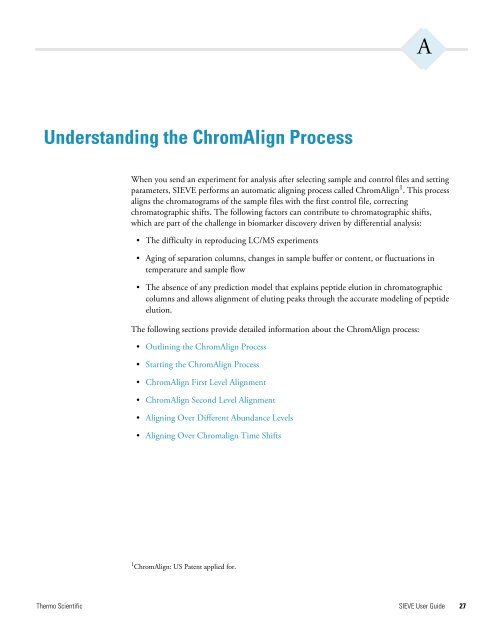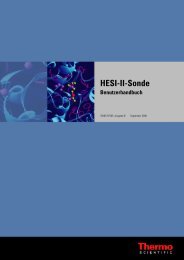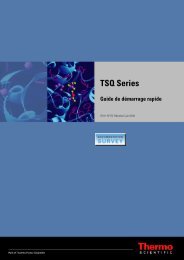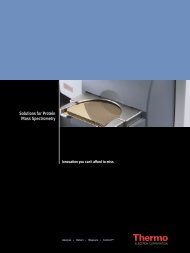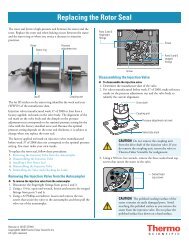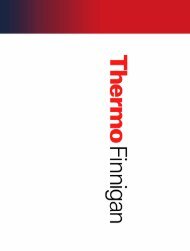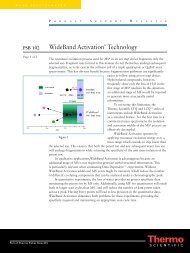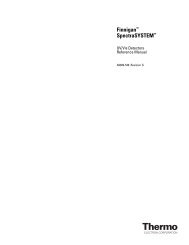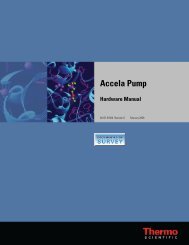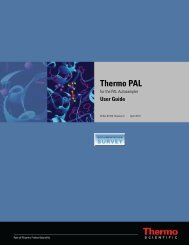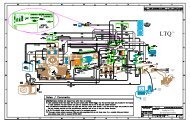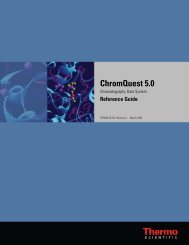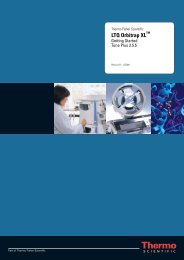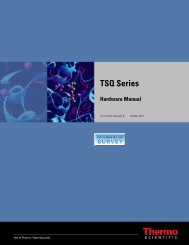SIEVE User Guide
SIEVE User Guide
SIEVE User Guide
Create successful ePaper yourself
Turn your PDF publications into a flip-book with our unique Google optimized e-Paper software.
Understanding the ChromAlign Process<br />
When you send an experiment for analysis after selecting sample and control files and setting<br />
parameters, <strong>SIEVE</strong> performs an automatic aligning process called ChromAlign 1 . This process<br />
aligns the chromatograms of the sample files with the first control file, correcting<br />
chromatographic shifts. The following factors can contribute to chromatographic shifts,<br />
which are part of the challenge in biomarker discovery driven by differential analysis:<br />
• The difficulty in reproducing LC/MS experiments<br />
• Aging of separation columns, changes in sample buffer or content, or fluctuations in<br />
temperature and sample flow<br />
• The absence of any prediction model that explains peptide elution in chromatographic<br />
columns and allows alignment of eluting peaks through the accurate modeling of peptide<br />
elution.<br />
The following sections provide detailed information about the ChromAlign process:<br />
• Outlining the ChromAlign Process<br />
• Starting the ChromAlign Process<br />
• ChromAlign First Level Alignment<br />
• ChromAlign Second Level Alignment<br />
• Aligning Over Different Abundance Levels<br />
• Aligning Over Chromalign Time Shifts<br />
1 ChromAlign: US Patent applied for.<br />
Thermo Scientific <strong>SIEVE</strong> <strong>User</strong> <strong>Guide</strong> 27<br />
A


